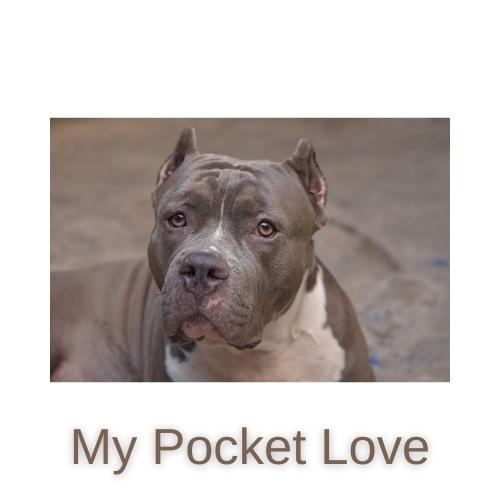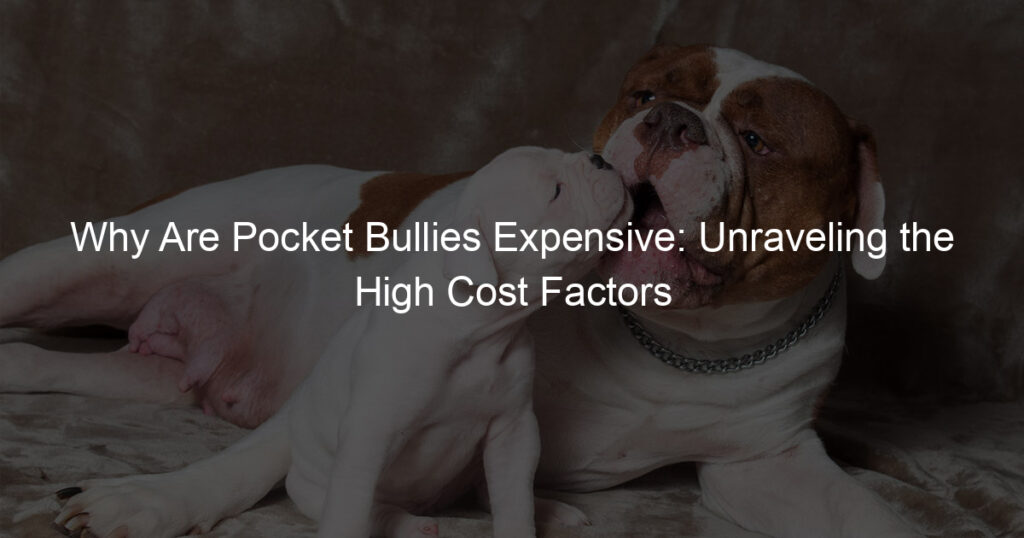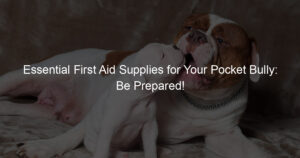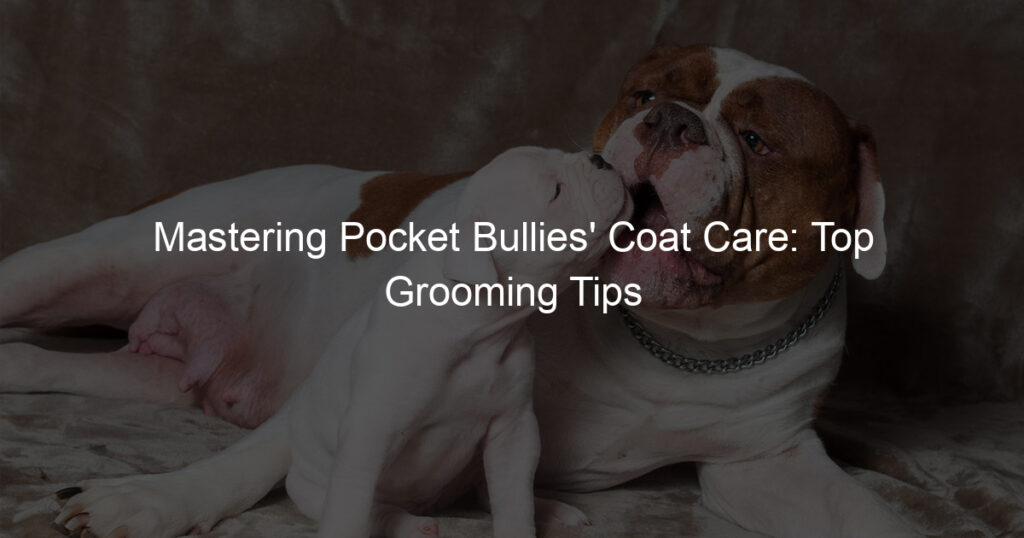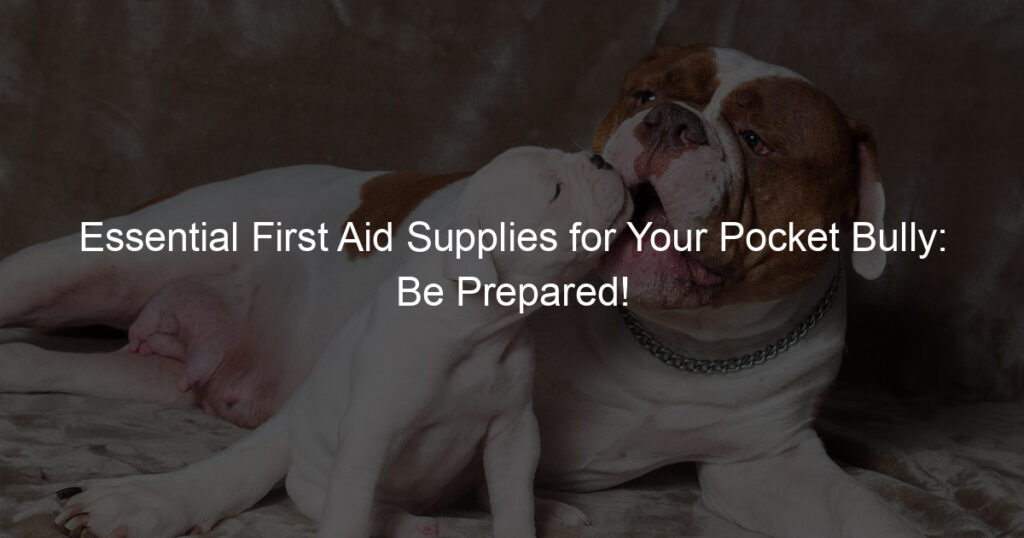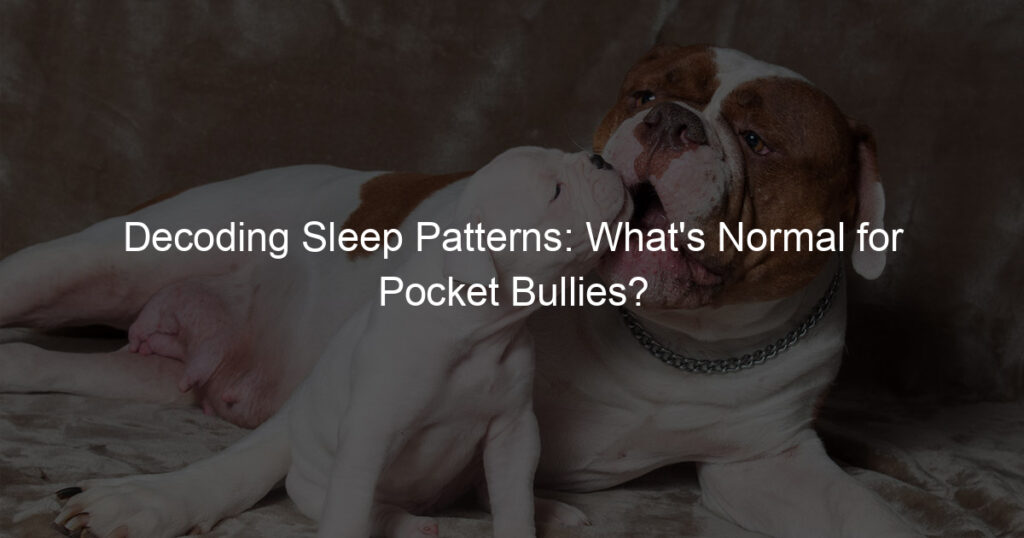Pocket Bullies have recently gained popularity among dog enthusiasts, but many wonder why these compact canines come with a hefty price tag.
These small yet muscular dogs, officially known as American Pocket Bullies, are a designer breed resulting from a mix between American Pit Bull Terriers and American Staffordshire Terriers, with a touch of Patterdale Terrier.
Why Are Pocket Bullies Expensive? Their unique physical appearance, desirable temperament, and breed rarity contribute to their relatively high cost.
Being a specialized breed, Pocket Bullies possess specific traits that set them apart from other bully breeds. Their health aspects require attentive care, and the overall breeding process contributes significantly to the expense.
Moreover, these dogs are more than just eye-catching companions; they are also wonderful family pets whose unique needs demand a great deal of consideration from their owners.
Key Takeaways
- Pocket Bullies are a specialized breed with unique traits that contribute to their high cost.
- The breeding process and health aspects of Pocket Bullies require careful attention, increasing their overall expense.
- These small yet muscular dogs make excellent family pets, but prospective owners must be prepared for the responsibility and cost involved.
Why Are Pocket Bullies Expensive
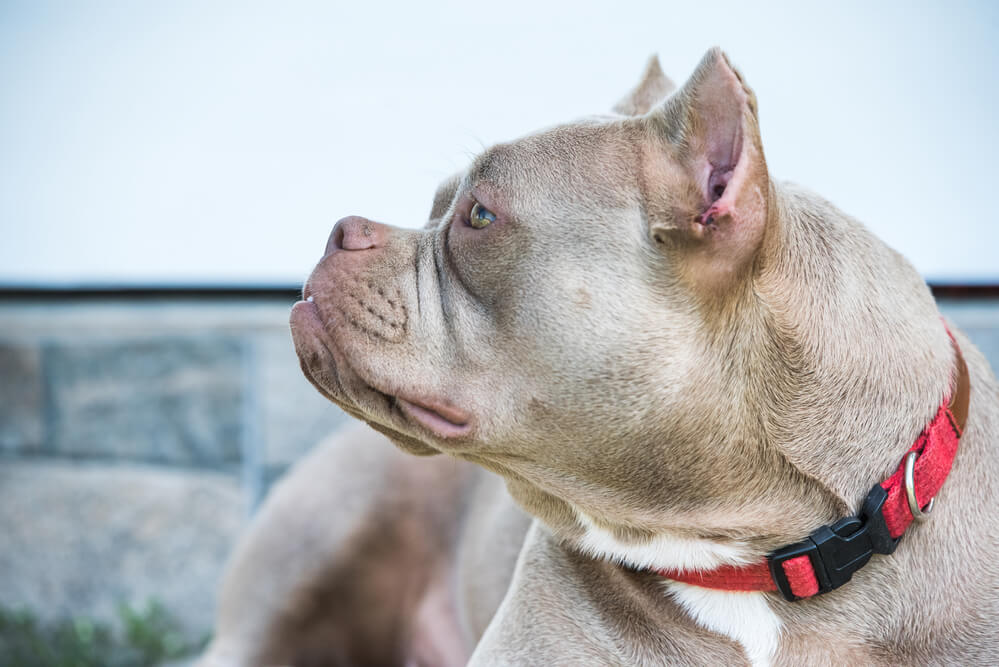
Breed Details
As an enthusiast of the American Bully breed, I’m always excited to share information about the Pocket Bully variety.
Pocket Bullies are a compact version of the American Bully, a mixed breed that originates from the American Pit Bull Terrier, American Bulldog, and American Staffordshire Terrier.
They are often confused with other breeds, like the English Bulldog or French Bulldog, but have distinct characteristics that set them apart.
Pocket Bullies are smaller than the Standard and Classic American Bullies, standing at just 17 inches or less in height. Yet, they still possess a muscular and sturdy body, giving them the classic bully look.
Despite their smaller stature, they still have an impressive weight range of about 30 to 60 pounds.
Breed History
The history of the Pocket Bully can be traced back to the selective breeding of American Bullies. Breeders wanted to create a more compact version of this popular breed, so they began to selectively breed smaller American Bullies together.
The goal was to achieve a dog with a shorter and more compact build while still maintaining their muscular appearance and strong temperament.
The American Bully breed, as a whole, started in the 1980s with the aim of developing an ideal family companion that would be free of any aggressive behavior.
Since then, breeders and enthusiasts alike have worked diligently to promote the breed as a loyal, friendly, and versatile dog. Pocket Bullies have gained popularity as a unique variety that offers the same qualities with a smaller size.
Unique Features
What really sets Pocket Bullies apart from other breeds in the American Bully family are their unique physical characteristics. They have shorter legs, a more compact body, and a distinct head shape.
Let’s take a look at some of their defining features:
- Size: As their name suggests, Pocket Bullies are known for their small size. They stand at 17 inches or less at the withers and can weigh anywhere between 30 to 60 pounds.
- Structure: Despite their stature, Pocket Bullies are still built with sturdy, muscular bodies. They often have thick necks, wide chests, and a strong, straight back.
- Head: Pocket Bullies have a blocky, square-shaped head with a short muzzle and large, round eyes. Their ears are typically cropped, giving them an alert and assertive expression.
- Coat: These dogs have a short, glossy coat that can come in a variety of colors, including fawn, white, black, and brindle.
The Pocket Bully is a fascinating, compact version of the American Bully that has captivated many for their unique appearance and affectionate personality.
Health Aspects of Pocket Bullies
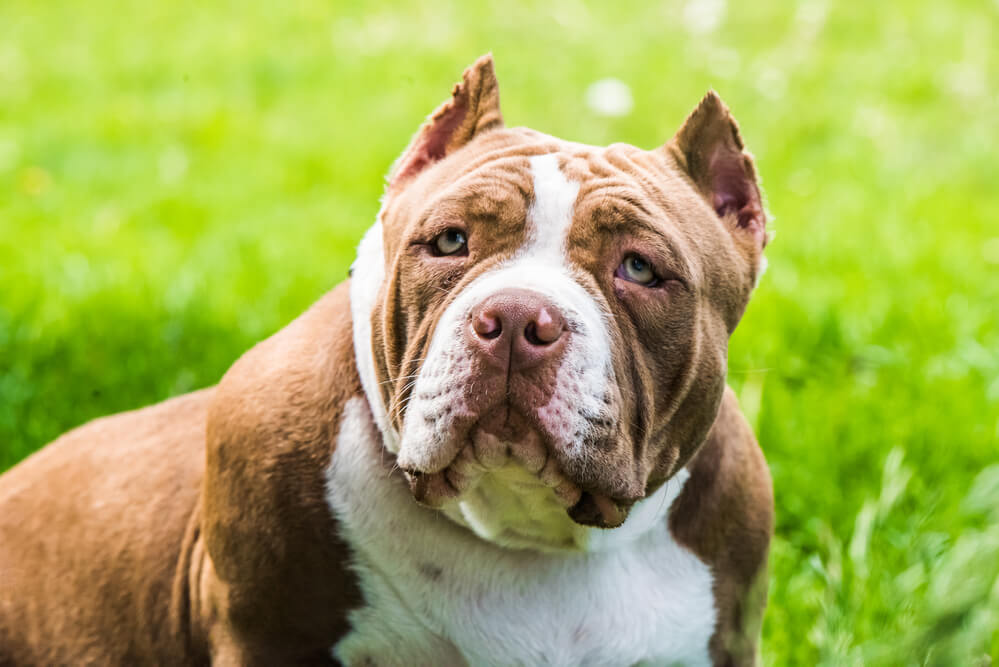
Potential Health Issues
As a responsible owner, I want to ensure that my Pocket Bully remains healthy. It is essential to know about the potential health issues that may affect this breed.
Even though Pocket Bullies are generally healthy dogs, they might still face certain health problems inherited from their parents like any other breed.
Some common health issues among Pocket Bullies include hip dysplasia, allergies, and heart problems.
Hip dysplasia is a significant concern because it can lead to arthritis and joint pain. It’s crucial to get regular check-ups and follow the recommendations of the AKC and the veterinarian for optimal care.
Allergies are also common in Pocket Bullies, which may manifest as skin irritation or gastrointestinal issues. Regular grooming, cleaning, and maintaining a balanced diet can help manage them.
Care for Healthy Pocket Bullies
To maintain the health of my Pocket Bully, I need to provide an appropriate diet and sufficient exercise. A proper diet should be rich in proteins, balanced with essential nutrients, and catered to the individual needs of my Pocket Bully.
It’s important to prevent obesity, as this may exacerbate existing health issues.
Regular exercise is crucial for maintaining their physical and mental health. As a compact and muscular breed, Pocket Bullies enjoy playtime and activities that keep them engaged. Some favorite exercises include brisk walks, swimming, or fetch.
But, always be cautious while exercising them in hot weather, as they may face difficulty in regulating their body temperature.
Monitoring the health of my Pocket Bully includes regular visits to the veterinarian and following their advice on vaccinations and preventive care.
Also, I should pay close attention to any changes in their behavior or appearance, as these may be early signs of underlying health problems.
Staying informed and proactive can help my Pocket Bully maintain its health and avoid potential health issues in the future.
The Physical Appearance of Pocket Bullies
Physical Features and Differences
In my experience with Pocket Bullies, their size is one of the most notable features that set them apart from other American Bully breeds. Despite their compact size, they possess a muscular and stocky build which gives them a strong presence.
Pocket Bullies typically have a height range of 12 to 16 inches (30.5 to 40.6 cm) and can weigh anywhere from 30 to 50 pounds (13.6 to 22.7 kg), making them the smallest of the American Bully breeds.
Their distinctive physical features include wide-set, attentive eyes, a broad muzzle, and large, powerful jaws. These features, combined with their prominent chest and well-defined musculature, give Pocket Bullies a bold and imposing appearance.
Variations in Color
Pocket Bullies come in a variety of colors, which can make each dog unique. Their coat hues range from classic American Bully shades like red, black, fawn, and white to more exotic variations like merle.
These colors can be solid or mixed, adding to the breed’s visual appeal.
Eyes are another striking feature of Pocket Bullies. They can have striking blue or light brown eyes, which can contrast beautifully with their vibrant fur colors.
Regardless of their color combination, Pocket Bullies always seem to catch the eye with their distinct shades and patterns.
Understanding Pocket Bullies Temperament
As a pocket bully owner, I can confidently attest to their unique temperament. These dogs may appear intimidating, but they possess gentle and loving personalities.
They are fiercely protective of their families, often displaying a strong sense of loyalty.
I’ve found my pocket bully to be highly adaptable and intelligent, which makes training and socialization relatively easy. With consistent and positive reinforcement, it’s possible to mold their behavior to be well-mannered and less aggressive.
Pocket bullies are generally sociable and enjoy being around people. My pocket bully, for example, has an affectionate nature and enjoys cuddling up with me and my family.
This temperament is one of the reasons why these dogs are so appealing to many pet owners.
Though pocket bullies have a calm demeanor, they still retain some of their ancestors’ strength and protective instincts. When they sense a threat, they’re likely to act in defense of their families.
In my experience, early training has been effective in curbing this behavior and ensuring my dog remains friendly and approachable in various situations.
It’s important to mention that not all pocket bullies exhibit the same temperament. Factors such as genetics, upbringing, and socialization will significantly influence a dog’s personality.
I strive to provide my pocket bully with a loving and encouraging environment, as this is key to nurturing their kind and approachable nature.
Pocket Bullies and Exercise
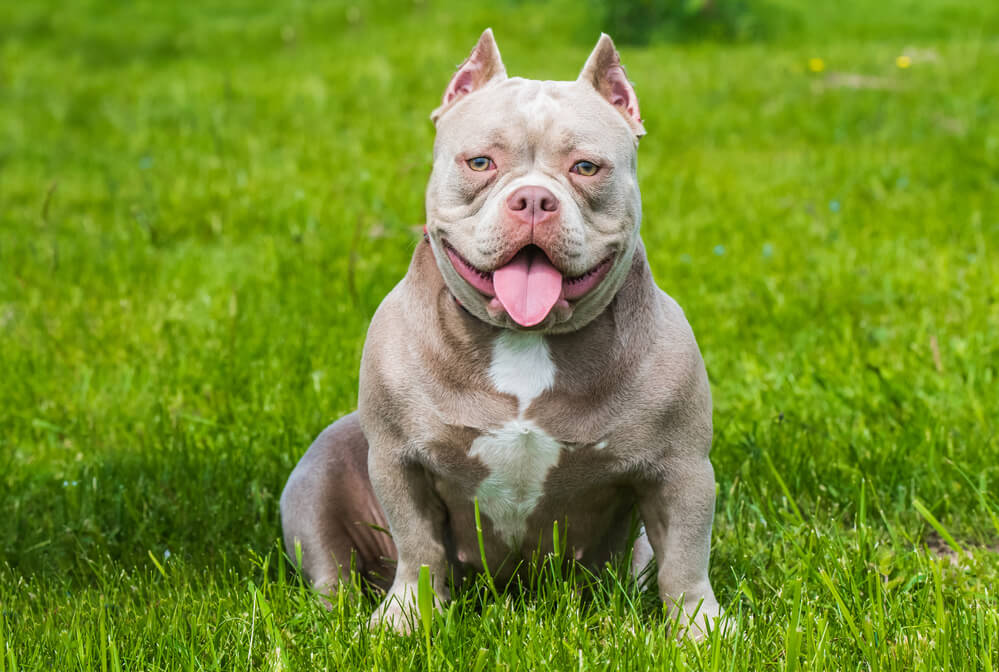
As a pocket bully owner, I can tell you that exercise is an essential part of their daily routine. These compact and muscular dogs may look tough, but they require regular physical activity to maintain their health and burn off excess energy.
Regular exercise helps keep their weight in check, reduces the risk of obesity-related illnesses, and promotes overall mental well-being.
I make sure to engage my pocket bully in various types of exercise to keep them interested and prevent boredom. Brisk walks are a favorite, as they give us both a good workout. We usually go for two 15- to 30-minute walks per day.
I am mindful of the temperature outside and limit exercise during extremely hot or cold days, as pocket bullies can be sensitive to harsh weather conditions.
In addition to walks, playtime is vital for my pocket bully’s mental stimulation. We love playing fetch and tug of war, both of which help burn off excess energy and strengthen their muscles.
When we’re inside, I use interactive toys that challenge their cognitive abilities and keep them entertained.
Lastly, I incorporate training into our daily exercise routine. Obedience training not only teaches my pocket bully good manners and behaviors, but it also provides mental stimulation and reinforces our bond.
Short, consistent training sessions work best, and I always reward them with praise and treats for their hard work.
Remember, every pocket bully is different, so it’s essential to assess their specific exercise needs and abilities. Regular exercise promotes a healthy and happy life for your pocket bully, and you’ll enjoy the benefits of having a well-exercised and content companion by your side.
The Cost of Owning a Pocket Bully
Initial Purchase Cost
When it comes to the initial purchase cost of a Pocket Bully, I can tell you that these dogs are indeed on the expensive side. The high demand for these small, compact canines is one of the factors that contribute to their hefty price tag.
You can expect to spend anywhere from $2,000 to $10,000 or more on a Pocket Bully, depending on its pedigree, physical characteristics, and the breeder’s reputation. Some exclusive bloodlines can even fetch prices on the upper end of this range.
Cost of Care
Caring for a Pocket Bully comes with its own set of expenses. While their small size may seem like it would keep costs low, there are actually some distinctive needs that can add up.
Here’s a breakdown of some of the regular costs associated with owning a Pocket Bully:
- Food: You’ll need to provide a high-quality diet for your Pocket Bully. This can cost around $40 to $60 per month.
- Veterinary care: Regular vet visits, vaccinations, and preventative care will likely run you about $500 to $800 annually.
- Grooming: Though their coats are low-maintenance, Pocket Bullies still require routine grooming. Budget around $30 to $50 per grooming session.
- Accessories and supplies: Things like bedding, leashes, and toys typically cost around $100 to $200 throughout the year.
These costs don’t include potential unforeseen expenses like emergencies or treating specific health issues that may arise.
Investment Worth
Taking the costs into account, some people might wonder if owning a Pocket Bully is a worthwhile investment. From my perspective, the answer is subjective and depends on what you value in a canine companion.
The unique qualities and appearance of a Pocket Bully are certainly appealing, and their loyal and loving nature can make them wonderful pets.
Further, owning a rare breed like the Pocket Bully can bring a sense of prestige to some enthusiasts.
Justifying the investment in a Pocket Bully comes down to each individual’s personal preferences and financial situation.
Breeding Pocket Bullies
Breeding Practices
In my experience with breeding Pocket Bullies, I’ve noticed that reputable breeders use selective breeding practices to produce the desired characteristics in their dogs.
They adhere to the breeding standards set by organizations like the American Bully Kennel Club (ABKC) to ensure they’re producing healthy, well-tempered dogs.
Breeding Pocket Bullies requires proper genetic testing to avoid passing down any hereditary health issues to future generations. This involves additional costs for breeders, such as veterinary consultations, testing, and other expenses.
Moreover, responsible breeders invest in raising their breeding dogs in safe, comfortable environments where they are properly socialized, which adds to the overall cost of producing these dogs.
Pedigree and Bloodline
A Pocket Bully’s pedigree and bloodline play a significant role in determining its value. Purebred dogs with strong pedigrees often command higher prices due to their lineage’s history of producing desirable traits and maintaining breed standards.
In the world of Pocket Bullies, top bloodlines are known for their exceptional conformation, temperament, and muscular builds.
These elite bloodlines generally have dogs with multiple generations of champions or grand champions in their lineage. For example, some well-known Pocket Bully bloodlines include Gottiline, Razors Edge, and Daxline.
When I breed Pocket Bullies from these sought-after bloodlines, it’s crucial to ensure that their offspring meet or exceed the breed’s standard to maintain the lineage’s reputation.
Breeding top-quality Pocket Bullies requires extensive knowledge and investment on the part of the breeder. This, combined with the selective breeding practices and attention to pedigrees and bloodlines, contributes to the high cost of these dogs.
Due to the care and dedication put into breeding them, Pocket Bullies are a valuable and unique addition to the canine world.
Pocket Bullies and Families
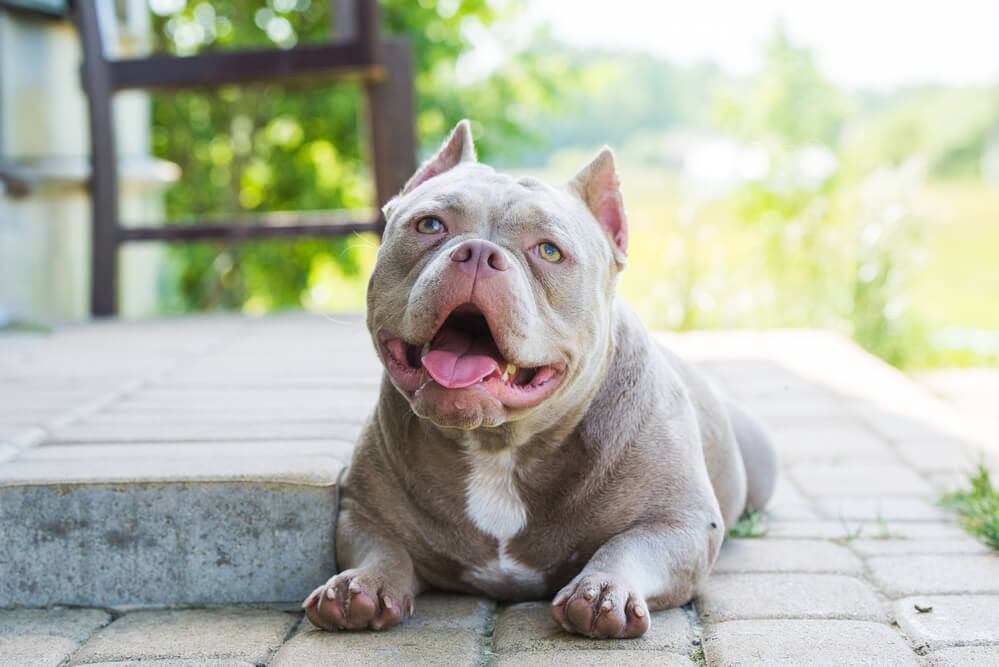
As a dog enthusiast, I have observed that Pocket Bullies are great family dogs. They are affectionate and get along well with children, making them ideal pets for families. Despite their muscular and intimidating appearance, this breed is known for its gentle and friendly nature.
Pocket Bullies are protective of their families, which is a desirable trait for many pet owners seeking a loyal companion.
My experience with Pocket Bullies has shown that they are adaptable and can thrive in various living environments. They are suitable for families living in apartments or homes with small yards, as they require moderate exercise and love being indoors.
Furthermore, Pocket Bullies are intelligent and can be trained easily, ensuring a harmonious life for both your family and your pet.
However, I must emphasize that Pocket Bullies, like any dog breed, require proper training and socialization from an early age, especially when living with children. This will help to ensure that they grow up with good manners and a balanced temperament.
As a responsible pet owner, it is crucial to invest time and effort in training your Pocket Bully, guiding them with positive reinforcement and consistency.
The charm of Pocket Bullies lies in their unique blend of powerful appearance and gentle nature, making them a great addition to any family.
With proper care and understanding of their needs, owning a Pocket Bully can be an enjoyable and rewarding experience for pet owners and families alike.
The Various Bully Classes
In the world of American Bullies, there are several different classes that distinguish these dogs based on their physical characteristics.
As a knowledgeable enthusiast, I want to share some insights on the different classes of American Bullies, which include Pocket, Extreme, Classic, XL, Micro, Exotic, and Standard types.
Let’s explore each class in more detail:
Pocket Bullies are smaller-sized American Bullies, measuring 17 inches or less at the withers (the highest part of the back). Their smaller stature makes them desirable for those who appreciate a compact, muscular dog. Despite their size, Pocket Bullies are still strong, confident, and have a commanding presence.
Extreme Bullies showcase exaggerated features such as a wider chest, larger head, and more pronounced muscle definition. They have a more aggressive appearance, but their temperament remains friendly and loving, just like other American Bullies.
Classic Bullies resemble the original American Bully breed. They have a medium-sized, well-balanced body and are known for their loyalty and intelligence. Classic Bullies are an excellent representation of the breed’s signature characteristics, making them highly sought-after by enthusiasts.
XL Bullies are the largest class within the American Bully breed, with males standing over 20 inches and females over 19 inches at the withers. These giants display impressive muscle mass and strength, making them a popular choice for those who want an imposing presence and a strong protector.
Micro Bullies are smaller even than Pocket Bullies, usually measuring around 12-16 inches at the withers. They have the same muscular build and distinctive features as other American Bullies but in a more compact form, which attracts people who prefer the smallest size possible without compromising the breed’s strength and charisma.
Exotic Bullies are considered a more unconventional class, as they exhibit exaggerated features such as shorter legs, wider chests, and larger heads, which may be the result of crossbreeding with other breeds. They are known for their unique appearance, which often attracts attention from bully breed lovers.
Standard Bullies epitomize the classic American Bully traits in terms of body structure, size, and temperament. They are considered the “ideal” representation of the breed, boasting well-balanced physiques and sweet, friendly dispositions.
Each of these classes showcases the wide variety and rich depth present within the American Bully breed. As an enthusiast, I appreciate the unique characteristics of each class and the sheer beauty and power of these amazing dogs.
The American Bully Kennel Club

As a knowledgeable enthusiast of the American Bully breed, I know that their value is heavily influenced by the organizations that oversee them. One such organization is the American Bully Kennel Club (ABKC).
The ABKC serves as a key registry for the American Bully breed, helping define breed standards and ensuring the dogs’ pedigree integrity.
In contrast to the American Kennel Club (AKC), which does not yet recognize the American Bully as an official breed, the ABKC is devoted specifically to the American Bully and similar breeds.
They work to educate dog owners and breeders about the breed, as well as organize and sanction events like shows and competitions.
Pocket Bullies, like other varieties of the American Bully, receive their expensive price tags in part due to the stringent requirements upheld by the ABKC.
This includes proper pedigree documentation and adherence to breed standards. Both of these aspects involve significant investments in time, effort, and money by the breeders.
Pedigree integrity is essential to the ABKC, as it strives to maintain the American Bully breed’s exclusivity and quality. Thus, puppies that come from reputable breeders with ABKC-registered parents are valued highly.
When it comes to breed standards, Pocket Bullies must align with specific traits determined by the ABKC, such as their size, temperament, and appearance.
Breeders often invest heavily in ensuring that their dogs fit within these parameters, contributing to the overall expense of Pocket Bullies.
In conclusion, the American Bully Kennel Club plays a crucial role in establishing the worth of Pocket Bullies and other American Bully varieties.
With their focus on pedigree, breed standards, and education, the ABKC helps breeders maintain the high quality and exclusivity of these dogs, ultimately affecting their market price.
Frequently Asked Questions
What factors contribute to the high price of Pocket Bullies?
The high price of Pocket Bullies can be attributed to various factors, such as breeding costs, quality of bloodlines, coat colors, and their unique appearance. High demand and limited availability also contribute to their expensive nature.
Are certain bloodlines more costly than others?
Yes, some bloodlines are more expensive than others. Top-quality, well-known bloodlines generally demand higher prices. Good genetics and well-bred dogs often result in healthier and better-temperament Pocket Bullies, making them highly sought after by buyers.
How does the breeding process affect the cost of these dogs?
Breeding Pocket Bullies involves a thorough selection process and can be expensive due to costs like stud fees, artificial insemination, prenatal care, and potential complications during delivery.
These factors contribute to the overall cost, which is ultimately passed on to buyers.
Do specific coat colors influence the pricing of Pocket Bullies?
Yes, particular coat colors may affect Pocket Bullies’ pricing. Unique and rare coat colors are often more expensive since they attract higher demand.
However, it’s essential to remember that the dog’s health and bloodline should be prioritized overcoat color.
What is the connection between their rarity and their price?
Pocket Bullies are a relatively rare breed, and their scarcity increases their value. When there is limited availability of a particular dog breed, the demand often outweighs the supply, driving up the price.
This is especially true for breeds with specific desirable traits, such as Pocket Bullies.
Are there health issues contributing to the expensive nature of Pocket Bullies?
As with any breed, certain health issues can be prevalent, and Pocket Bullies are no exception. Ensuring that these dogs are properly health tested and bred only from healthy stock will increase the breeding cost.
Additionally, it may be necessary to invest in regular veterinary care or insurance to address potential health issues.
